John Walker is an English painter and printmaker. He has been called "one of the standout abstract painters of the last 50 years."
Australian art is any art made in or about Australia, or by Australians overseas, from prehistoric times to the present. This includes Aboriginal, Colonial, Landscape, Atelier, early-twentieth-century painters, print makers, photographers, and sculptors influenced by European modernism, Contemporary art. The visual arts have a long history in Australia, with evidence of Aboriginal art dating back at least 30,000 years. Australia has produced many notable artists of both Western and Indigenous Australian schools, including the late-19th-century Heidelberg School plein air painters, the Antipodeans, the Central Australian Hermannsburg School watercolourists, the Western Desert Art Movement and coeval examples of well-known High modernism and Postmodern art.

Arthur Merric Bloomfield Boyd was a leading Australian painter of the middle to late 20th century. Boyd's work ranges from impressionist renderings of Australian landscape to starkly expressionist figuration, and many canvases feature both. Several famous works set Biblical stories against the Australian landscape, such as The Expulsion (1947–48), now at the Art Gallery of New South Wales. Having a strong social conscience, Boyd's work deals with humanitarian issues and universal themes of love, loss and shame.
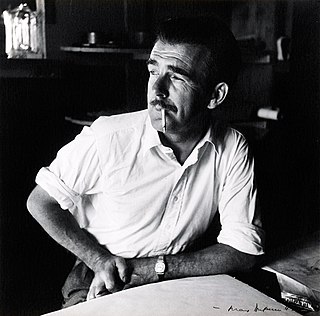
Sir William Dobell was a renowned Australian portrait and landscape artist of the 20th century. Dobell won the Archibald Prize, Australia's premier award for portrait artists on three occasions. The Dobell Prize is named in his honour.
Dale Frank is an Australian contemporary artist best known for his biomorphic abstract paintings. His practice has included found object-sculptures, performance installations, drawings and most recently paintings with sculptural elements. Frank lives and works in the Hunter Valley, New South Wales, Australia.
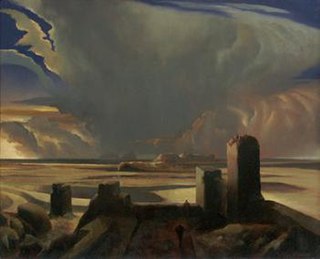
Rick Amor is an Australian artist and figurative painter. He was an Official War Artist for Australia.

Captain Sir William Alexander Dargie was a renowned Australian painter, known especially for his portrait paintings. He won the Archibald Prize, Australia's premier award for portrait artists on eight separate occasions; a record held since 1952.

Ben Quilty is an Australian artist and social commentator, who has won a series of painting prizes: the 2014 Prudential Eye Award, 2011 Archibald Prize and 2009 Doug Moran National Portrait Prize. He has been described as one of Australia's most famous living artists.
Asher Bilu is an Australian artist who creates paintings, sculptures and installations. He has also contributed to several films by Director Paul Cox as production designer. He was born in Israel, and began his career as an artist soon after arriving in Australia in 1956. From the start, his art has been abstract, with particular emphasis on technological experimentation. His technique changes as he investigates the use of new media, but his work always reflects his fascination with light, and his love of music and science, especially cosmology.
Robert Jacks was an Australian painter, sculptor and printmaker.

Gareth Sansom is an Australian artist, painter, printmaker and collagist and winner of the 2008 John McCaughey Memorial Prize of $100,000.
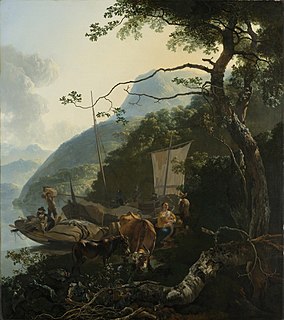
Sam Leach is an Australian contemporary artist. He was born in Adelaide, South Australia. Leach worked for many years in the Australian Tax Office after completion of a degree in Economics. He also completed a Diploma of Art, Bachelor of Fine Art degree and a Master of Fine Art degree at RMIT in Melbourne, Victoria. Leach currently resides in Melbourne. Leach's work has been exhibited in several museum shows including "Optimism" at the Queensland Art Gallery and "Neo Goth" at the University of Queensland Art Museum in 2008, in 2009 "the Shilo Project" at the Ian Potter Museum of Art and "Horror Come Darkness" at the Macquarie University Art Gallery and "Still" at Hawkesbury Regional Gallery in 2010. His work is held in public collections of regional galleries of Geelong, Gold Coast, Coffs Harbour, Newcastle and Gippsland and the collections of La Trobe University and the University of Queensland.
Tony Lloyd is an Australian contemporary artist. Lloyd's paintings are influenced by cinema, in particular Film Noir and Science Fiction, and the Romantic conception of the sublime. Lloyd's largely monochromatic paintings are realist in style.
Vaughan Murray Griffin (1903–1992) was an Australian print maker and painter.
Contemporary Indigenous Australian art is the modern art work produced by Indigenous Australians, that is, Aboriginal Australians and Torres Strait Islander people. It is generally regarded as beginning in 1971 with a painting movement that started at Papunya, northwest of Alice Springs, Northern Territory, involving Aboriginal artists such as Clifford Possum Tjapaltjarri and Kaapa Tjampitjinpa, and facilitated by white Australian teacher and art worker Geoffrey Bardon. The movement spawned widespread interest across rural and remote Aboriginal Australia in creating art, while contemporary Indigenous art of a different nature also emerged in urban centres; together they have become central to Australian art. Indigenous art centres have fostered the emergence of the contemporary art movement, and as of 2010 were estimated to represent over 5000 artists, mostly in Australia's north and west.
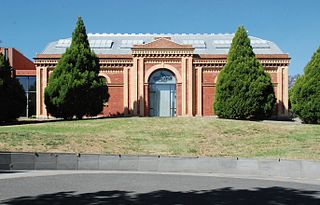
Bendigo Art Gallery in Bendigo, founded in 1887, is one of Australia’s oldest and largest regional art galleries. The Bendigo Art Gallery hosts Australia's richest open painting prize, the Arthur Guy Memorial Painting Prize, worth $50,000, which was launched in 2003.
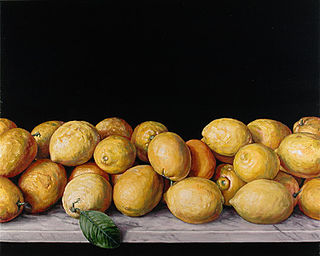
Christopher "Chris" Beaumont, is an Australian still life painter, influenced by Spanish masters of the early 17th century particularly Juan Sánchez Cotán and Francisco de Zurbarán.

Neil Haddon is a British/Australian painter. His paintings display a wide variety of influences and styles, from hard edge geometric abstraction to looser expressive figurative painting. Haddon currently lives and works in Hobart, Tasmania.

Reinis Zusters was a Latvian-born Australian artist. Zusters was a prolific painter, working predominantly in oils, painting many large landscapes, including triptychs of the Blue Mountains. Zusters drew much of his inspiration from the Australian countryside, depicting the colour and form of nature as a rich and vibrant panorama.
Dorothy Mary Braund was an Australian post-war figuration and contemporary feminist artist, whose practice included painting, printmaking and teaching. Braund's extensive career was instrumental in contributing to the Modernist art scene, along with a generation of significant women artists including: Mary Macqueen, Barbara Brash, Anne Marie Graham, Constance Stokes, Anne Montgomery and Nancy Grant. Braund's first solo exhibition, held in 1952 at Peter Bray Gallery in Melbourne, launched her career and from then on she had consistent shows and exhibitions. Braund has had approximately 29 solo exhibitions and participated in 25 group exhibitions throughout her career. Braund is also a part of the Cruthers Collection of Women's Art.










